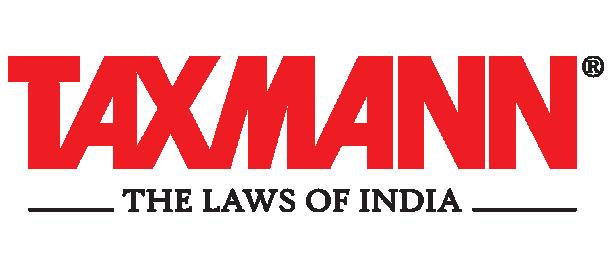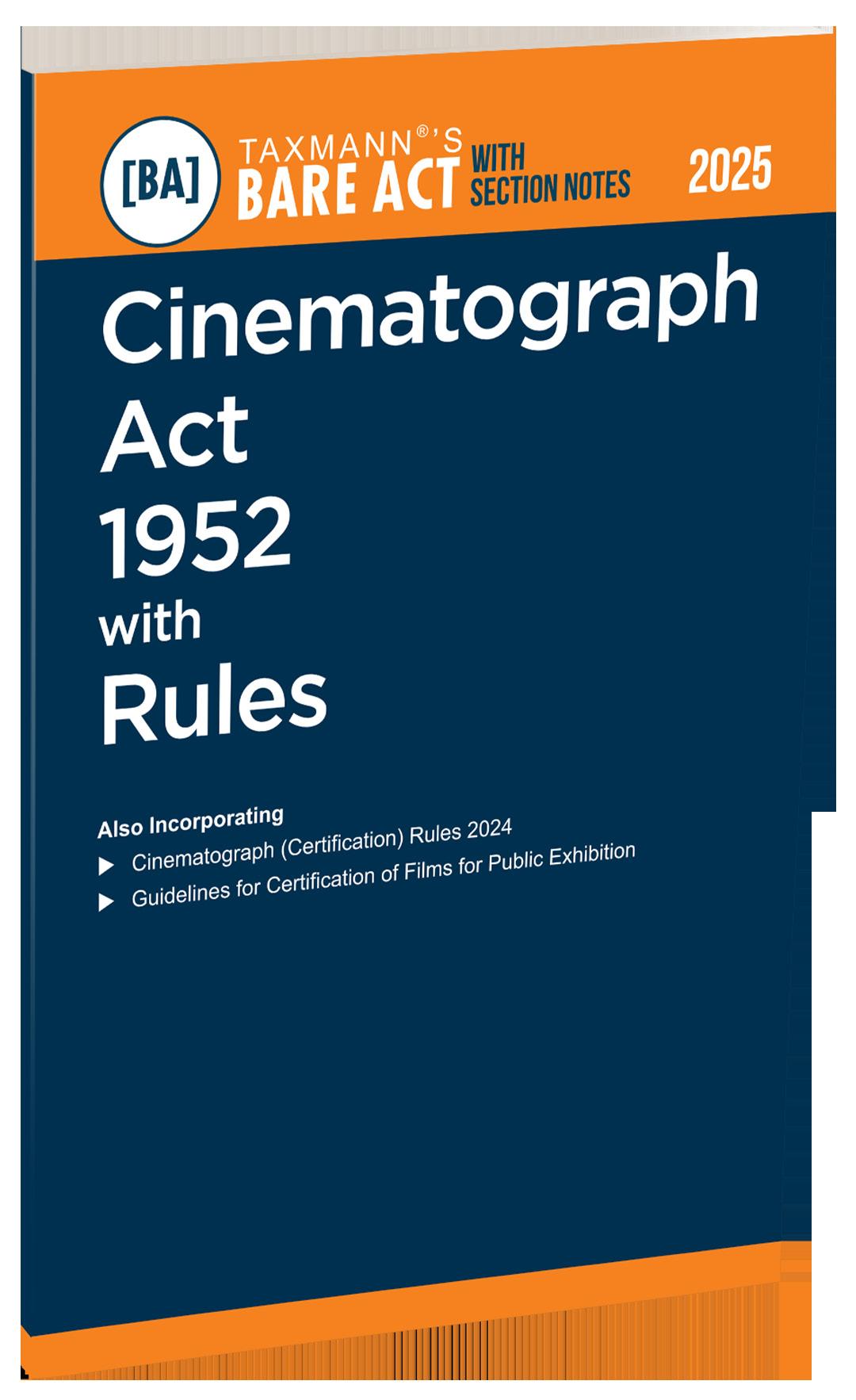















An Act to make provision for the certification of cinematograph films for exhibition and for regulating exhibitions by means of cinematographs.
BE it enacted by Parliament as follows:—
Short title, extent and commencement.
1. (1) This Act may be called the Cinematograph Act, 1952.
(2)Parts I, II and IV extend to the whole of India 2[***] and Part III extends to 3[the Union territories] only.
(3)This Act shall come into force on such date4 as the Central Government may, by notification in the Official Gazette, appoint: 5[***]
1. Dated 21-3-1952.
This Act has been extended to Dadra and Nagar Haveli by the Dadra and Nagar Haveli (Laws) Regulation, 1963 w.e.f. 1-7-1965; Goa, Daman and Diu by the Goa, Daman and Diu (Laws) No. 2 Regulation, 1963, w.e.f. 19-12-1963.
Parts I and II of the Act shall come into force in the State of Jammu and Kashmir w.e.f. 1-5-1974, vide G.S.R. 183(E), dated 23-4-1974.
Part III of the Act shall come into force in the Union Territory of Arunachal Pradesh, w.e.f. 1-10-1984, vide S.O. 757(E), dated 29-10-1984.
2. Words “except the State of Jammu and Kashmir” omitted by the Cinematograph (Amendment) Act, 1973, w.e.f. 28-5-1973.
3. Substituted for “Part C States” by the Cinematograph (Amendment) Act, 1959, w.e.f. 12-3-1959.
4. With effect from 28-7-1952.
5. Omitted by the Cinematograph (Amendment) Act, 2023, w.e.f. 11-8-2023. Prior to its omission, proviso as inserted by the Cinematograph (Amendment) Act, 1973, w.e.f. 28-5-1973, read as under:
“Provided that Parts I and II shall come into force in the State of Jammu and Kashmir only on such date after the commencement of the Cinematograph (Amendment) Act, 1973 (25 of 1973), as the Central Government may, by notification in the Official Gazette, appoint.”
This Act applies to the whole of India.
No exemption from applicability for any State/UT.
Definitions.
2. In this Act, unless the context otherwise requires,—
(a) “adult” means a person who has completed his eighteenth year;
6[(b) “Board” means the Board of Film Certification constituted by the Central Government under section 3;]
7[(bb) “certificate” means the certificate granted by the Board under section 5A;]
(
c) “cinematograph” includes any apparatus for the representation of moving pictures or series of pictures;
(d) “District Magistrate”, in relation to a presidency-town, means the Commissioner of Police;
8[(dd) “film” means a cinematograph film;]
9(ddd) “infringing copy” shall have the same meaning as assigned to it in subclause (ii) of clause (m) of section 2 of the Copyright Act, 1957 (14 of 1957);]
(e) “place” includes a house, building, tent and any description of transport, whether by sea, land or air;
(f) “prescribed” means prescribed by rules made under this Act;
7[(g) “regional officer” means a regional officer appointed by the Central Government under section 5 and includes an additional regional officer and an assistant regional officer;
(h) 10[***]]
9[(i) “UA marker” means an age-based indicator for a film which has received or is intended to receive a ‘‘UA’’ certificate under section 4 and such indicator may be “UA 7+” or “UA 13 +” or “UA 16 +”:
Provided that where the Central Government is satisfied that it is necessary or expedient so to do in public interest, it may, by an order published in the Official Gazette and for the reasons to be recorded in writing, declare such other indicators.]
6. Substituted by the Cinematograph (Amendment) Act, 1981, w.e.f. 1-6-1983. Prior to its substitution, clause (b), read as under:
‘(b) “Board” means the Board of Film Censors constituted by the Central Government under section 3.’
7. Inserted by the Cinematograph (Amendment) Act, 1981, w.e.f. 1-6-1983.
8. Inserted by the Cinematograph (Amendment) Act, 1959, w.e.f. 12-3-1959.
9. Inserted by the Cinematograph (Amendment) Act, 2023, w.e.f. 11-8-2023.
10. Omitted by the Tribunals Reforms Act, 2021, w.r.e.f. 4-4-2021. Prior to its omission, clause (h) as inserted by the Cinematograph (Amendment) Act, 1981, w.e.f. 1-6-1983, read as under:
‘(h) “Tribunal” means the Appellate Tribunal constituted under section 5D.’
This Section defines various terms like “adult,” “Board,” “cinematograph,” and “certificate.” as follows:
Adult: A person who is 18 years old or older.
Board: This refers to the Central Board of Film Certification (CBFC), popularly known as ‘the Censor Board’, set up by the Central Government to certify films.
Certificate: The certificate granted by the Board of Film Certification under section 5A, which allows the public exhibition of a film.
Cinematograph: Any device used to display moving pictures or a series of pictures, such as projectors or other equipment used for film exhibitions.
District Magistrate: In cities (presidency towns), this refers to the Commissioner of Police.
Film: Any cinematograph film or motion picture that can be shown to the public.
Infringing Copy: As defined in the Copyright Act, 1957, it refers to any illegal copy of a film.
Place: Any location, including buildings, tents, or transportation (whether by sea, land, or air), where films can be shown.
Prescribed: Refers to the rules established under this Act.
Regional Officer: An officer appointed by the Central Government to oversee film certification, including additional and assistant regional officers.
UA Marker: An age-based indicator for films given a “UA” certificate, specifying categories like “UA 7+”, “UA 13+”, or “UA 16+”, depending on the content’s suitability for different age groups.
Definition of Cinematograph – Inclusion of VCR/VCP - The appellants, operators of video parlours in Haryana, contended that video cassette recorders (VCRs) and video cassette players (VCPs) did not fall within the ambit of the term ‘cinematograph’ under section 2(c) of the Cinematograph Act, 1952, and therefore, they were not required to obtain licenses under the applicable State legislation. The Supreme Court rejected this contention, affirming that the definition of ‘cinematograph’ is inclusive and extends to any apparatus for the representation of moving pictures, which by statutory interpretation includes VCRs and VCPs. The Court applied the principle that statutory definitions must be interpreted in light of technological advances, and observed that legislative intent should be presumed to encompass new developments unless expressly excluded. Accordingly, it upheld the requirement that those operating video parlours must obtain licences in accordance with the provisions of the Cinematograph Act and relevant State rules. – Laxmi Video Theaters v. State of Haryana AIR 1993 SUPREME COURT 2328.
Scope of Cinematograph – Inclusion of VCR, VCP, and TV Projector - The appellant, who operated a video parlour exhibiting films through a video cassette recorder (VCR), video cassette player (VCP), and a TV projector on a separate wide screen, contended that such exhibition did not fall within the meaning of ‘cinematograph’ under section 2(c) of the Cinematograph Act, 1952. The Supreme Court rejected this argument, holding that the inclusive definition of ‘cinematograph’ encompasses any apparatus used for the exhibition of moving pictures, including VCRs, VCPs, and projectors. The Court emphasized that statutory definitions must adapt to scientific developments, and that
the presence of a separate screen, not inbuilt within a television set, does not exclude the applicability of the Act. The Court also referred to specific regulatory rules (Rules 98–100) that govern video cinema exhibition in Haryana, affirming the requirement of a license for such parlours. The High Court’s restrictive interpretation was reversed. – Regal Video v. State of Haryana AIR 1993 SUPREME COURT 2372.
Construction of references to any law not in force or any functionary not in existence in the State of Jammu and Kashmir.
2A. 11[*** ]
12[13[Board of Film Certification.]
3. (1) For the purpose of sanctioning films for public exhibition, the Central Government may, by notification in the Official Gazette, constitute a Board to be called the 13[Board of Film Certification] which shall consist of a Chairman and 14[not less than twelve and not more than twenty-five] other members appointed by the Central Government.
(2) The Chairman of the Board shall receive such salary and allowances as may be determined by the Central Government, and the other members shall receive such allowances or fees for attending the meetings of the Board as may be prescribed.
(3) The other terms and conditions of service of the members of the Board shall be such as may be prescribed.
The Central Government is empowered to form a Board to certify films for public exhibition.
Pursuant to its powers under this section, the Central Government has set up the Central Board of Film Certification (CBFC)
The CBFC is known in ordinary popular parlance as ‘the Censor Board’ .
11. Omitted by the Jammu and Kashmir Reorganisation (Adaptation of Central Laws) Order, 2020, w.e.f. 18-3-2020 and Union Territory of Ladakh Reorganisation (Adaptation of Central Laws) Order, 2020, w.e.f. 23-10-2020. Prior to its omission, section 2A, as inserted by the Cinematograph (Amendment) Act, 1973, w.e.f. 28-5-1973, read as under:
“2A. Construction of references to any law not in force or any functionary not in existence in the State of Jammu and Kashmir.—Any reference in this Act to any law which is not in force, or any functionary not in existence, in the State of Jammu and Kashmir, shall, in relation to that State, be construed as a reference to the corresponding law in force, or to the corresponding functionary in existence, in that State.”
12. Sections 3, 4, 5, 5A, 5B, 5C and 6 substituted for sections 3, 4, 5 and 6 by the Cinematograph (Amendment) Act, 1959, w.e.f. 12-3-1959. Earlier, section 6 was amended by the Cinematograph (Amendment) Act, 1953, w.e.f. 16-5-1953 and Repealing and Amending Act, 1957, w.e.f. 17-9-1957.
13. Substituted for “Board of Film Censors” by the Cinematograph (Amendment) Act, 1981, w.e.f. 1-6-1983.
14. Substituted for “not more than nine”, ibid
See Rules 3 to 7 of the Cinematograph (Certification) Rules, 2024
See Rules 10 to 13 and 15 to 21 of the Cinematograph (Certification) Rules, 2024
Certified Film and Sub-Judice Doctrine – Artistic expression cannot be gagged - A writ petition was filed under Article 32 seeking to prohibit the release of the film Aiyaary, alleging that it adversely reflected on the petitioner society and would affect pending litigations and the reputation of its members. The Supreme Court dismissed the petition, reiterating that once a film is certified under section 3 of the Cinematograph Act, 1952 by the Central Board of Film Certification (CBFC), including after consultation with competent authorities such as the Army, the judiciary should not interfere merely based on perceived references. The Court held that the doctrine of sub-judice cannot be stretched to negate the freedom of speech and expression under Article 19(1)(a), especially in the absence of concrete harm. It emphasized that restrictions must remain narrow and reasonable within Article 19(2), and the judiciary cannot compel disclaimers without affording the filmmaker a hearing. The petition was found meritless and was dismissed. – Adarsh Co-operative Housing Society Ltd. v. Union of India AIR 2018 SUPREME COURT 1430.
Pre-Certification Stage – Judicial Restraint and Artistic Freedom - A writ petition sought to restrain the release of the film Padmavati and prosecute its creators before the film had been certified by the Central Board of Film Certification (CBFC) under Section 3 of the Cinematograph Act, 1952. The Supreme Court dismissed the petition, reiterating that courts must not intervene in the certification process prior to CBFC’s statutory decision. The Court observed that pre-judging the content of a film before certification undermines the rule of law and statutory procedure. It also emphasized that films are a form of artistic expression protected under Article 19(1)(a), and freedom of speech includes creative liberties, subject only to reasonable restrictions under Article 19(2). The Court strongly deprecated the misuse of public interest litigation to sensationalize or censor films prematurely, and upheld the autonomy of CBFC in assessing films as per the Act, rules, and guidelines. – Manohar Lal Sharma v. Sanjay Leela Bhansali AIR 2018 SUPREME COURT 86.
4. 15[(1) Any person desiring to exhibit any film shall make an application to the Board for a certificate in such form and manner as may be prescribed.
15. Substituted by the Cinematograph (Amendment) Act, 2023, w.e.f. 11-8-2023. Prior to its substitution, section 4 as amended by the Cinematograph (Amendment) Act, 1959, w.e.f. 12-3-1959 and Cinematograph (Amendment) Act, 1981, w.e.f. 1-6-1983, read as under:
“4. Examination of films.—(1) Any person desiring to exhibit any film shall in the prescribed manner make an application to the Board for a certificate in respect thereof, and the Board may, after examining or having the film examined in the prescribed manner,— (i) sanction the film for unrestricted public exhibition: Provided that, having regard to any material in the film, if the Board is of the opinion that it is necessary to caution that the question as to whether any child below the age of twelve years may be allowed to see such a film should be considered by the parents or guardian of such child, the Board may sanction the film for unrestricted public exhibition with an endorsement to that effect; or
(ii) sanction the film for public exhibition restricted to adults; or
PUBLISHER : TAXMANN
DATE OF PUBLICATION : JULY 2025
EDITION : 2025 EDITION
ISBN NO : 9789371263184
NO. OF PAGES : 72
BINDING TYPE : PAPERBACK


Cinematograph Act 1952, with its accompanying Rules [Bare Act with Section Notes], as provided by Taxmann, establishes the definitive legal framework for film certification, exhibition, and regulation in India. This volume consolidates the current text of the Cinematograph Act 1952, the latest amendments (including the Cinematograph (Amendment) Act 2023), and the Cinematograph (Certification) Rules 2024. Each section is enriched with practical notes, expert commentary, landmark case law, and compliance tools, making it an essential reference for all stakeholders in India’s film industry.
This book is intended for the following audience:
• Film Producers, Distributors & Exhibitors
• Legal Practitioners, Judges & Policy Experts
• Regulatory & Government Authorities
• Media Professionals & Academicians
• Students of Law, Media, and Mass Communication
The Present Publication is the 2025 Edition, covering the amended and updated text of the Cinematograph Act [Act No. 37 of 1952] and Rules, with the following noteworthy features:
• [Comprehensive Bare Act] Full text of the Cinematograph Act 1952, allied laws, and amendments, including the latest statutory updates
• [Recent Amendments] Incorporation of changes up to the 2025 Edition—piracy, digital exhibition, and agebased certification
• [Pre-amendment Provisions] Footnoted extracts of prior versions for historical and transitional clarity
• [Section Notes] Concise, practical annotations for each section
• [Certification Rules 2024] Complete, updated rules with procedures and timelines
• [Landmark Case Law] Key judgments with explanatory notes
• [Film Certification Guidelines] Official guidelines on U, UA, A, and S categories with the latest UA markers
• [Compliance Tools] User-friendly indexes, forms, and tabulated processes
• [Offences & Penalties] Comprehensive treatment of offences, penalties, and appeals
• [Authoritative & Practical] Trusted reference, combining bare act reliability with practitioner usability
• [Professional Endorsement] Widely used by courts, law firms, and academic institutions